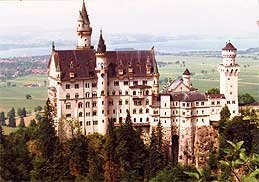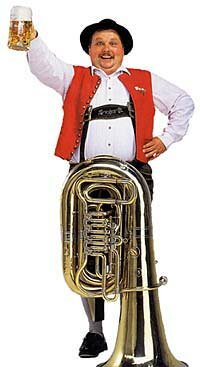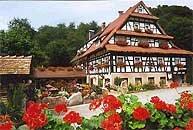
| Spanish French German Italian Russian Chinese Japanese Greek Portuguese Summer Camps |
||
|

|
Home Information Request Form Registration Form Conditions
|
Our German Courses in Germany - Berlin
|
|||||||||||||
|
Population |
Germany, since is reunification, is populated by nearly 81,8 million and its demographic density is of 229 inhabitants by square kilometer; which makes it one of the most densely populated European countries.
The population of Germany was constituted primarily of German groups like Franconiens, the Saxons, the Souabes and the Bavarians. The populations of different Länder federates do not coincide today with older ethnos groups. Länders were mainly created only after the Second World war with the assistance of the occupational powers; the layout of the borders have generally hardly taken account of the traditions. Moreover, the current refugees and the significant migrations of the post-war period, show that the mobility of the modern industrial company more or less blurres the borders between the various ethnic groups.
Different character features have always been allotted to the various ethnic groups. Mecklembourgeois have thus the reputation to be closed, Souabes treasurers, Rhenishs "good to be alive" type people and Saxons were the veined ones. Traditional festivals are still popular because they are funny for the various groups of the German population.
|
Weather |
The climate of Germany is very variable. In general it is from May to October that the temperatures are softest. In summer, the average temperatures range between 20 degrees Celsius to 30 degrees C, in winter they are closer to 0 degrees C.
|
Useful Information's |
|
Recipe |
Berlinois Fish
Ingredients
Preparation


|
Location |
Germany is located in central Europe, west of Poland and east of France. Germany has a total surface of 356.733 square kilometers. One finds great agglomerations in the Rhine-Hand area with the towns of Frankfurt, Wiesbaden and Mainz, the industrial area of the Rhine-Neckar with Mannheim and Ludwigshafen, the economic pole of Stuttgart and its surroundings as well as the active areas of of Bremen, Cologne, Dresden, Hamburg, Leipzig, Munich and Nuremberg-Fürth. Germany is composed of three principal geographical areas: a ground plain in the north, a zone of mountains in the center, and a mountainous area in the south which contains the black forest and the Bavarian Alps.

|
Capital |
|
Language spoken |
German is part of the generic group of Indo-Germanic languages. It is thus related to Danish, Norwegian and Swedish, as well as Dutch and Flemish, but also with English. The emergence of a common written language would have pleased Martin Luther.
Germany is rich in patois. The dialect and the pronunciation make it possible to recognize, for the majority of Germans, which area they are originating from. For example, if Clippings, Mecklembourgeois and Bavarian discussed in their respective dialect, they would have great difficulties of understanding each other.
|
Currency |
Deutsche Mark (DM)
|
Formalities |
Travel information and advisory reports
For nationals of other countries, please address yourself to the embassy or the consulate of China in your own country.
|
What to see and what to do |
The festivals in the open air attract thousands of music amateurs. Do not forget the market of Christmas which takes place on the 24/11/98 to the 24/12/98; Germany has a great number of cathedrals, ducal palates, carefully strengthened cities restored which it can offer to their curiosity: there is none less than 370 castles, palaces and princely residences. The small cities have a municipal theater even an opera and full orchestras. Every summer, Bayreuth makes the Wagnerian festival an international event, while Oberammergau plays passion every 10 years. Trade fairs take place in Frankfurt and Hanover or the great carnivals which precede the Lent in Munich or Cologne.
In 2001 Germany will celebrate 1000 years of Romanesque art in many historical places of the Roman times.


![]()